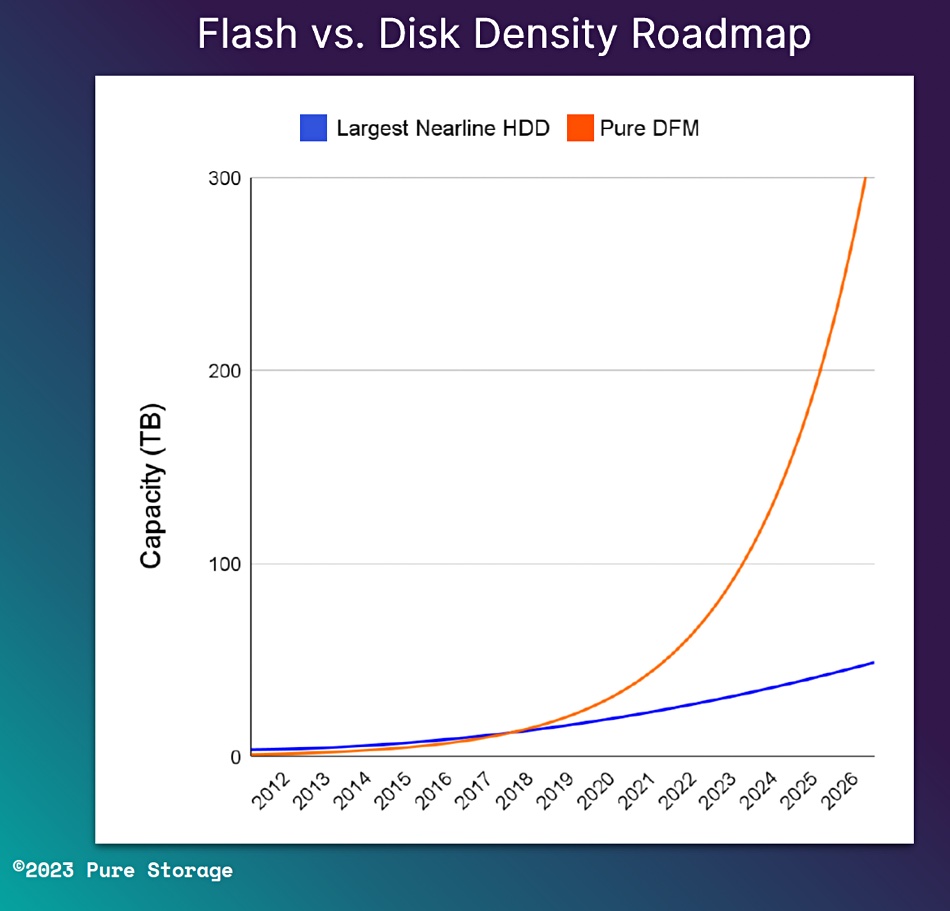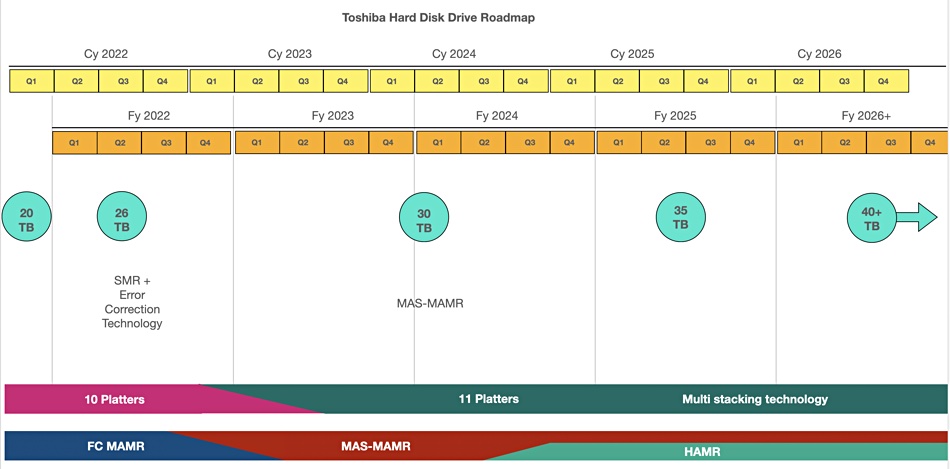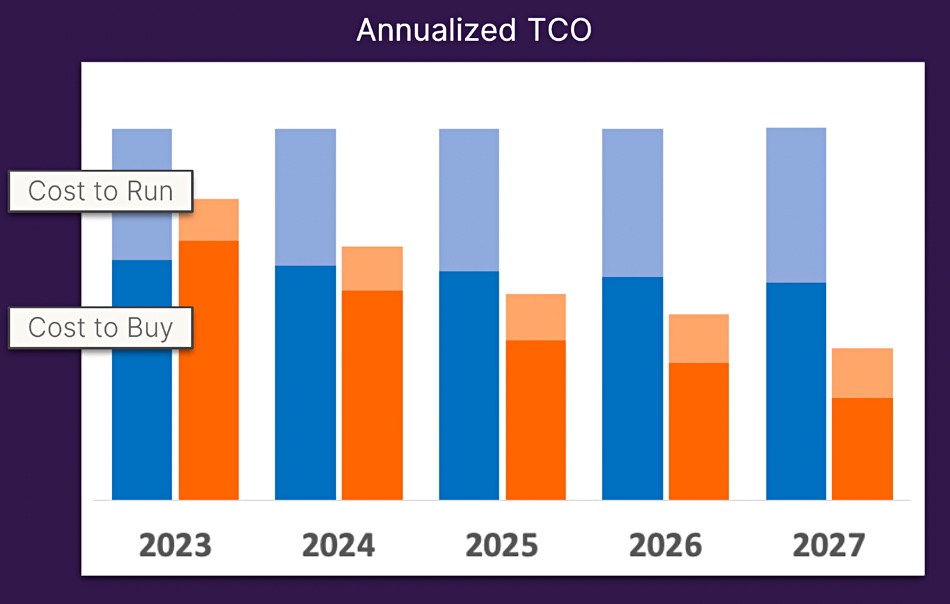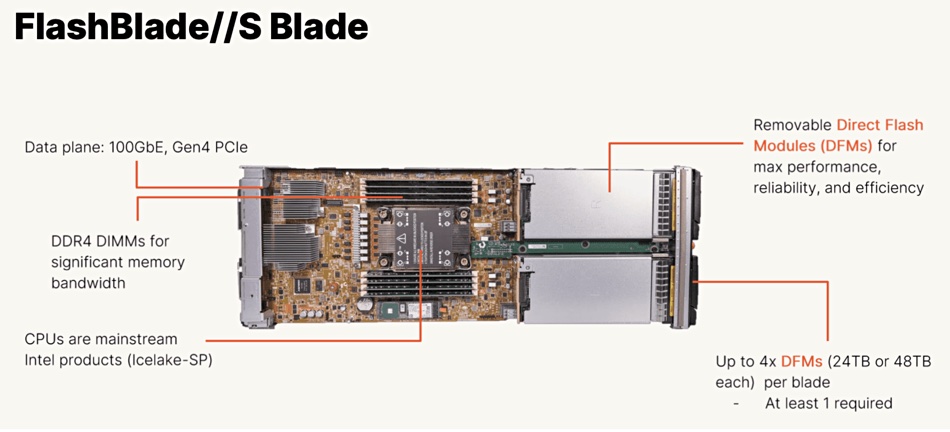Pure Storage says it will build a 300TB flash drive by 2026. The company manufactures its own SSDs, called Direct Flash Modules (DFMs), which are basically a collection of NAND chips with Pure’s FlashArray and FlashBlade operating system, Purity, providing system-wide flash controller functions. The FlashBlade//S and //E systems use either 24 or 48TB DFMs.
Pure CTO Alex McMullan briefed Blocks & Files and presented a chart showing Pure’s DFM capacity expansion roadmap out to a 300TB module:

He said: “The plan for us over the next couple of years is to take our hard drive competitive posture into a whole new space. Today we’re shipping 24 and 48TB drives. You can expect … a number of announcements from us at our Accelerate conference around larger and larger drive sizes with our stated ambition here to have 300TB drive capabilities, by or before 2026.”
This far outstrips other disk drive capacity roadmaps. For example, Toshiba sees its MAS-MAMR and HAMR technology taking it to 40TB in 2026:

Seagate has said its HAMR tech should enable a 50TB HAMR drive in its fiscal 2025 and a 100TB drive “at least by 2030.” Pure Storage will have a 5 to 6x capacity per drive advantage by then if its engineers can deliver the DFM goods.
McMullan also showed a chart depicting better and steadily declining TCO vs HDD systems between now and 2026:

A FlashBlade chassis can hold 10 blades. Each blade can be fitted with up to four DFMs. A 10-blade x 4 x 300TB DFM FlashBlade//E chassis would have 12PB of raw capacity, compared to today’s FlashBlade//E’s 1.92PB. McMullan said: “For customers … this opens up a whole new suite of capabilities. So we admire the persistence of hard drive vendors, but I don’t realistically think that they have a plan or a strategic goal [that matches this].”
McMullan said there could be intermediate drive sizes in between todays’ 48TB and 2026’s 300TB DFMs.
How will Pure get to a 300TB DFM? McMullan again: “All the chip fabs are shipping us somewhere between 112 and 160 layers. All the fab vendors have a plan and a path to get to 400-500 layers over the next five years. And the whole point of that will help us of course, on its own.”
Comment
That’s well and good but five years takes us to 2028, two years after McMullan’s 2026 and 300TB DFMs. That means 3D NAND layer count increases won’t get Pure to a 300TB DFM by 2026 on their own.
A 300-layer 3D NAND chip, double today’s 150 or so layers, might make a 100TB DFM possible but in our thinking there needs to be some other capacity booster, such as increasing the physical size of the DFMs so they can hold more chips.
You could fit physically larger DFMs on a FlashBlade if the compute and DRAM components were removed, as is the case with FlashBlade//S storage-only EX blades:

A longer DFM with 2.5x more capacity would be 120TB using today’s QLC 150-160 layer chips. Double that to a 300-plus layer chip and we’d be looking at a 240TB DFM, still 60TB short.
PLC (5bits/cell) NAND would add another 20 percent – 288TB, 12TB short – but, at this point, we are in the right area. Our best estimate is that Pure is relying on increased NAND chip count in physically larger DFMs, with chips built from more layers, and using PLC formatting to get to the 300TB level.
Rajiev Rajavasireddy, Pure’s FlashBlade VP Product Management, said: “PLC is a work in progress. This is why we have R&D on our hardware platforms. Yes, we have more than one way to skin that cat.”
"pure" - Google News
March 02, 2023 at 04:05AM
https://ift.tt/6PTc0iu
Pure claims 300TB flash drives coming 2026 – Blocks and Files - Blocks and Files
"pure" - Google News
https://ift.tt/OlkGLAt
https://ift.tt/KJnRwI8
Bagikan Berita Ini














0 Response to "Pure claims 300TB flash drives coming 2026 – Blocks and Files - Blocks and Files"
Post a Comment